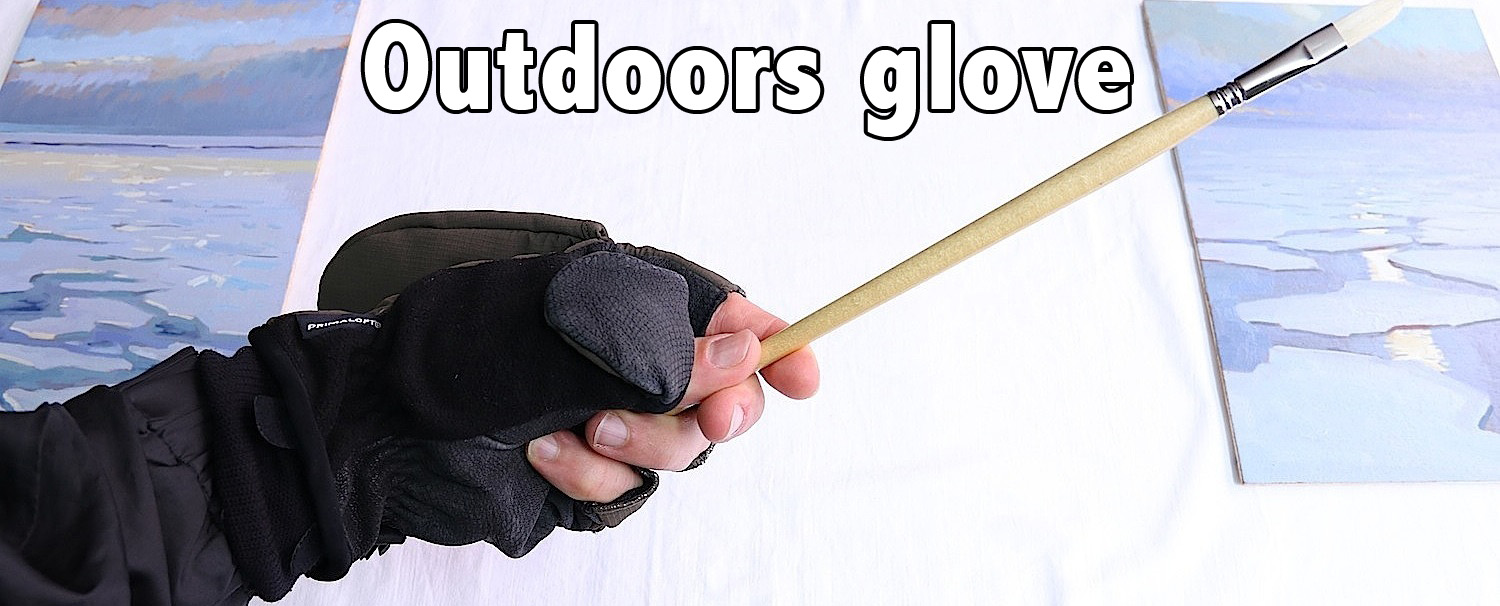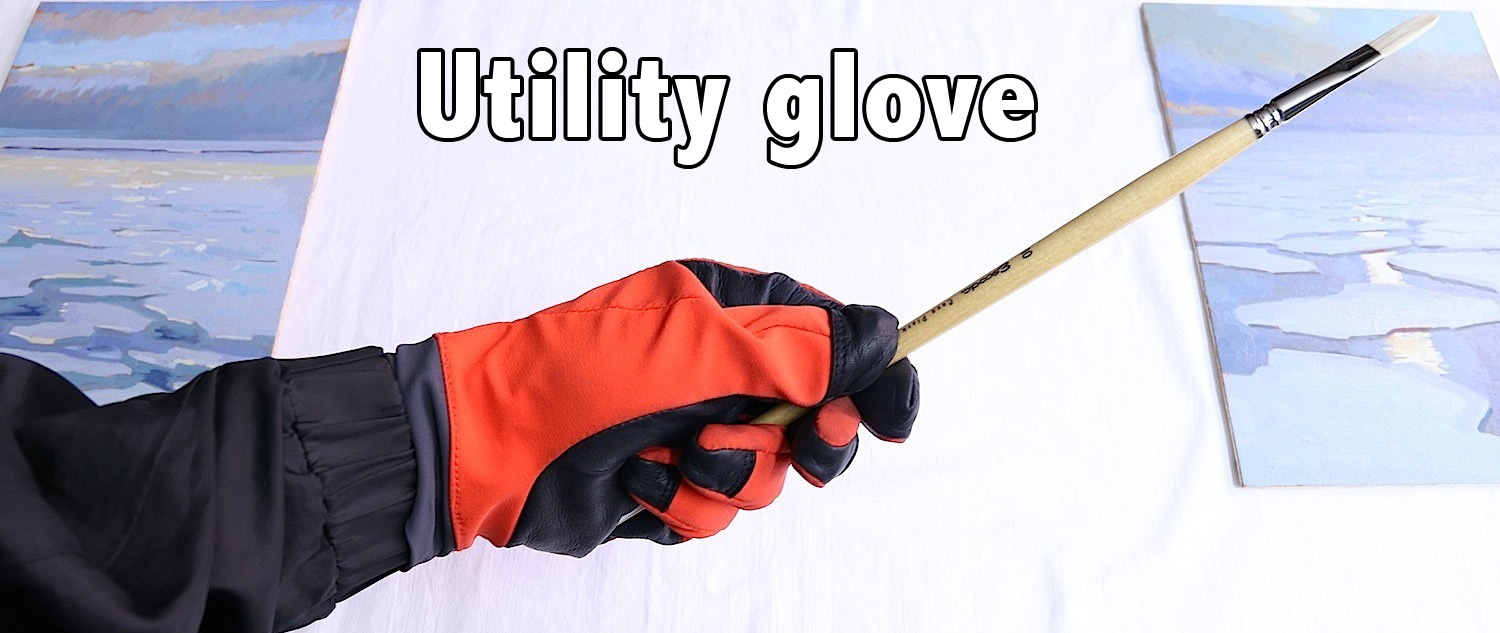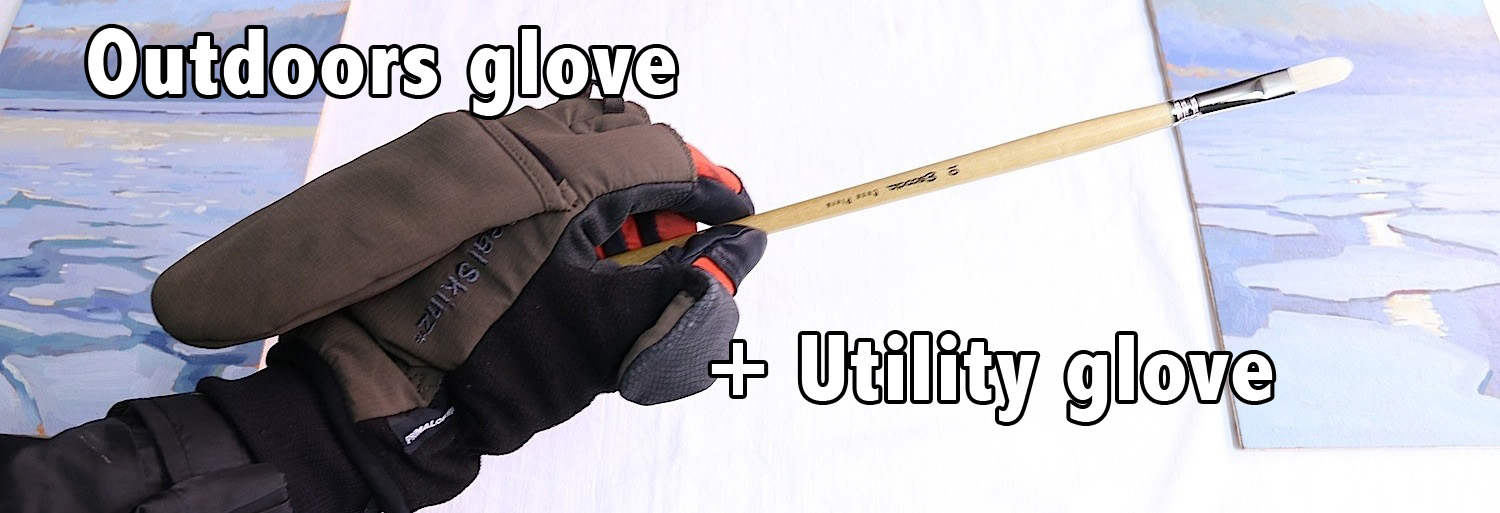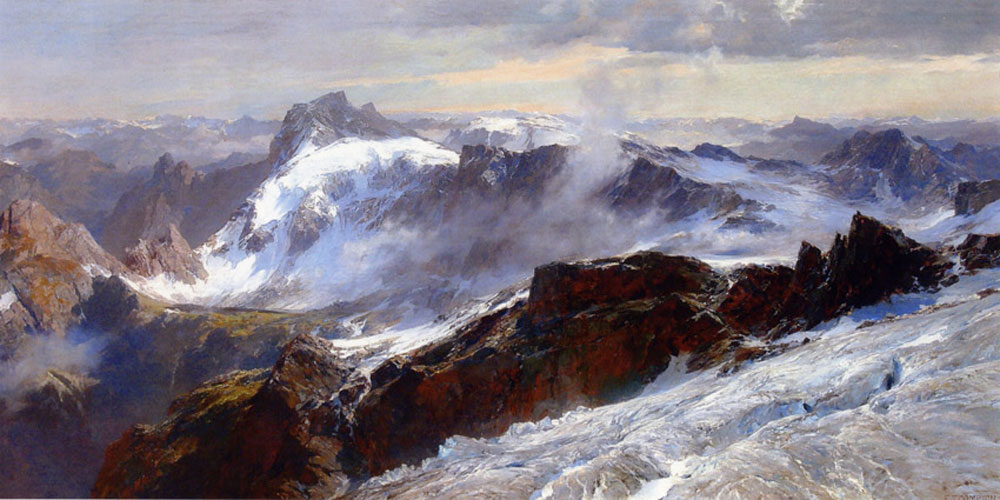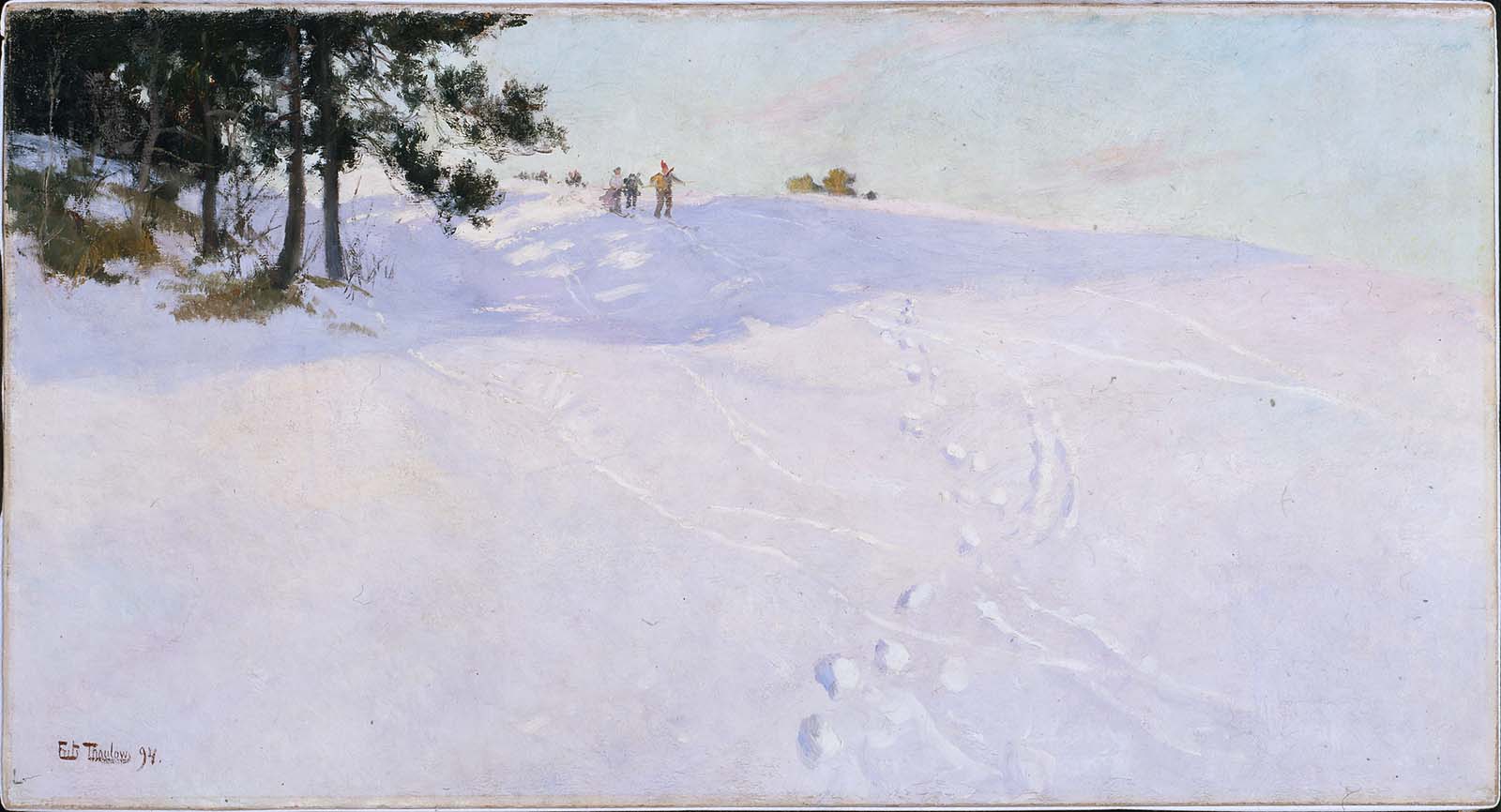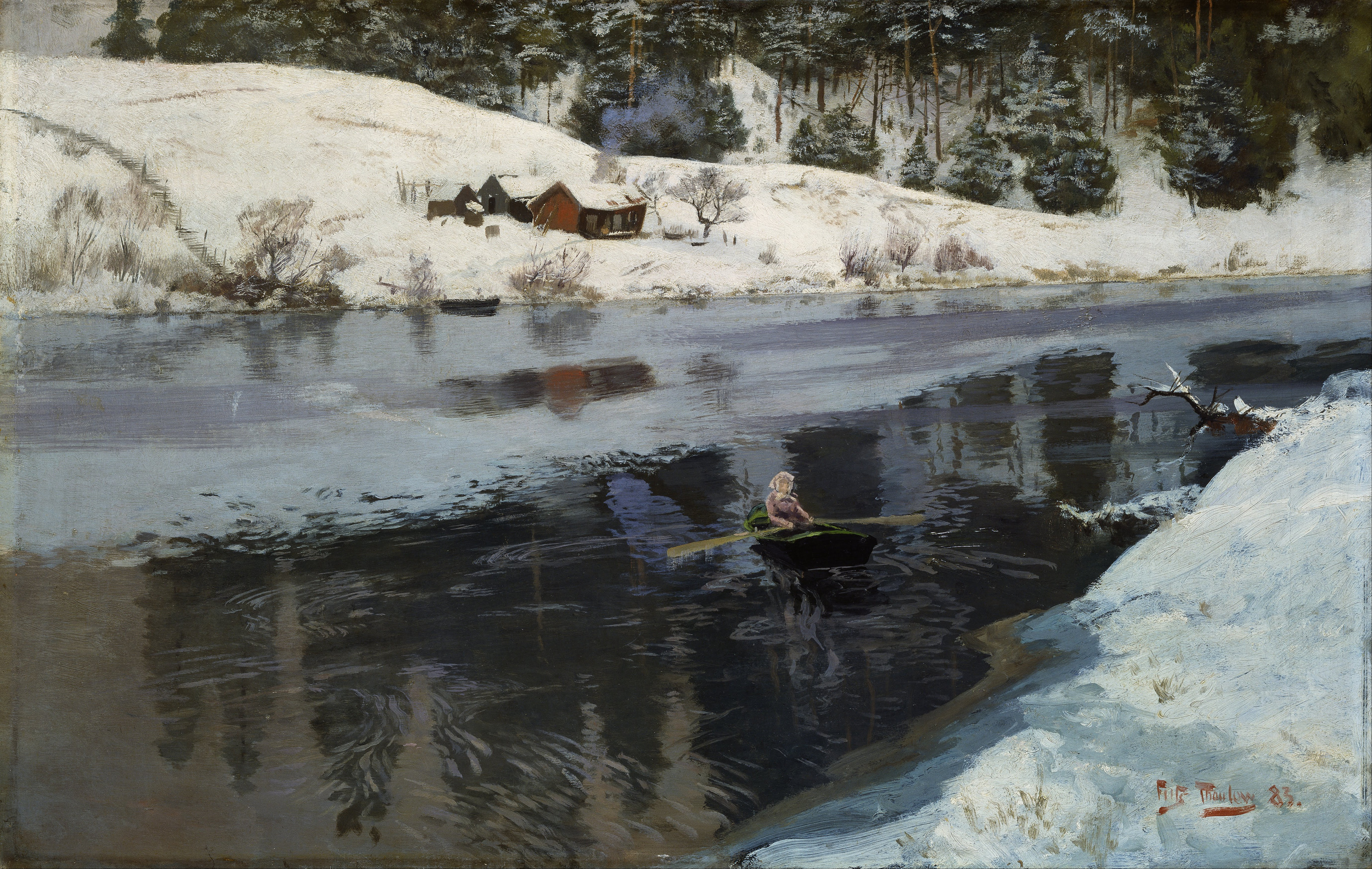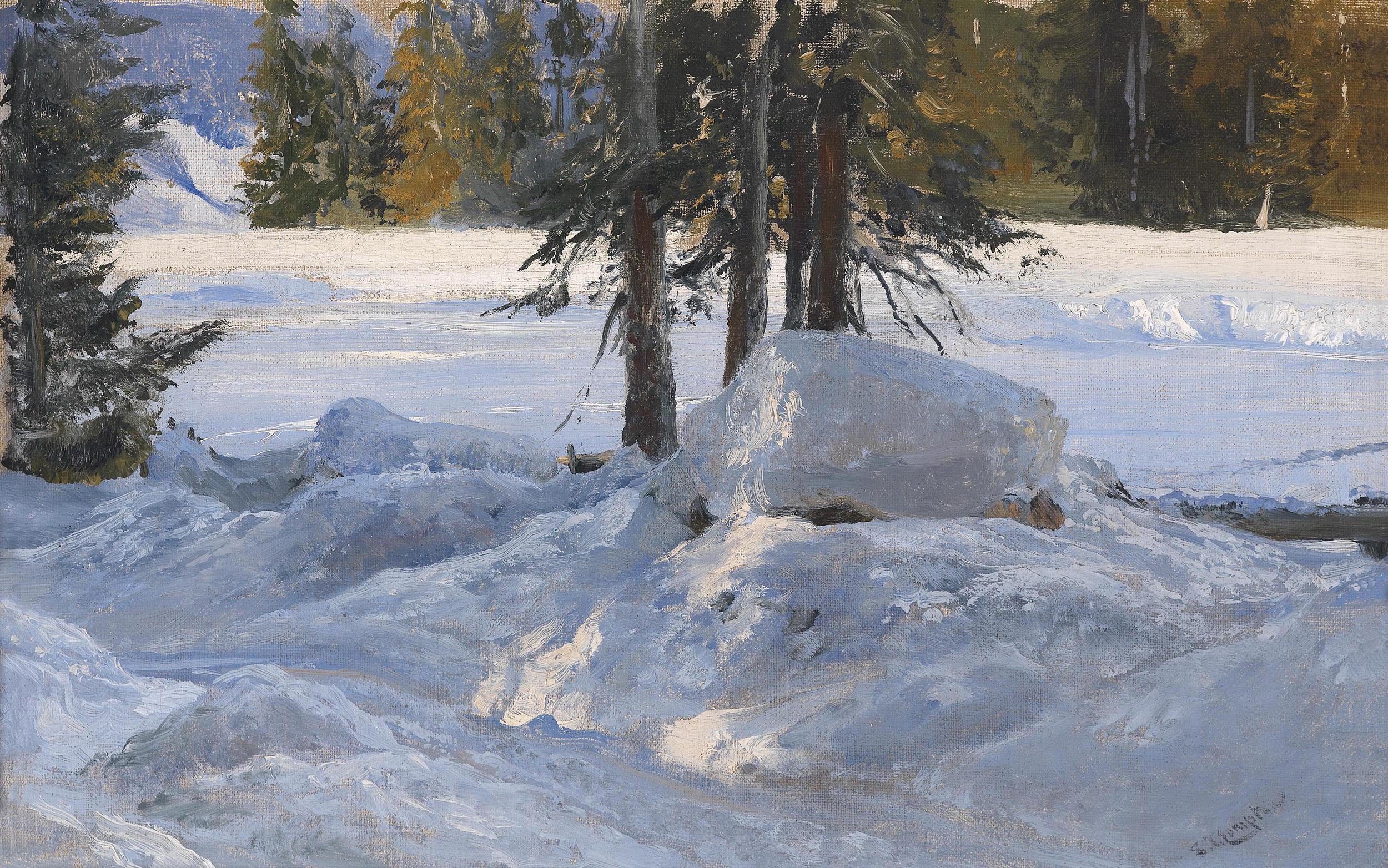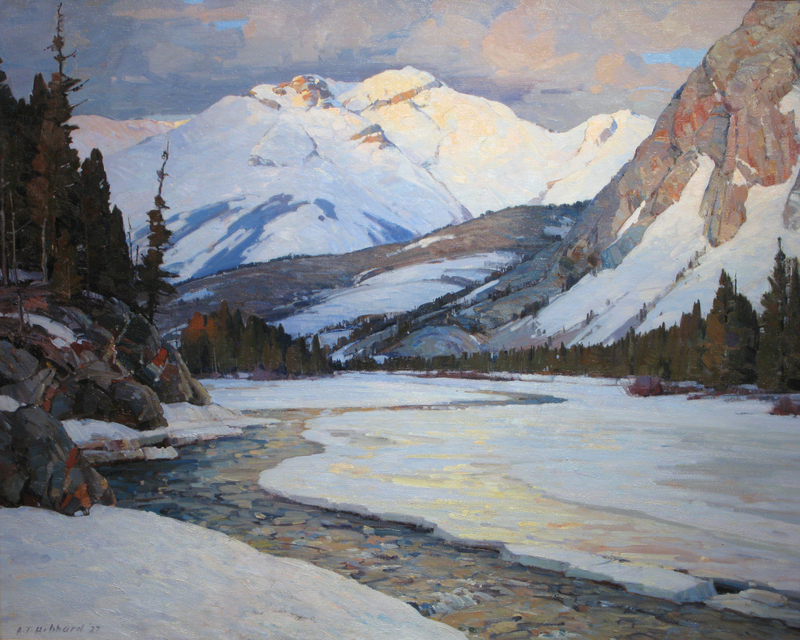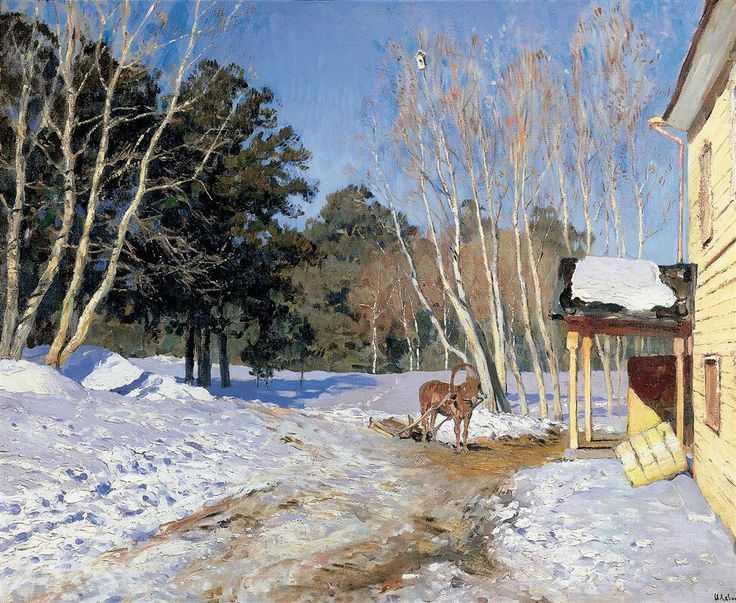Painting in the cold.
Whenever I come back from painting in cold places, people often ask the same questions:
How do you paint in the cold?
Does the paint act strangely?
Do you get cold?
To answer the first question: You just do it. The paint: It doesn’t act strangely, but the oils do; They coagulate in the cold, and just require a few drop of turps to find fluidity again. And, yes, eventually you get cold. Some people are not made for the cold. Personally I find it invigorating, but at some point, the cold will break me. But essentially, my time limit is determined by when my fingers start failing me. Eventually they get numb, dexterity is reduced, and I can’t control what I’m doing anymore.
Painting in the Arctic.
"Just wear gloves"- Sure, but which ones? The winter painting season is coming up (for the northern hemisphere), so I hope this can help.
Most plein-air painters will have heard about the Hibbard mitten, first used by Aldro Thompson Hibbard (1886-1972) himself of course. Not a glove, but a sort of wrapped up scarf. Easily replicated with an old wooly sock with with a hole. Every brush is inserted and removed one at a time, when needed, while about 10 brushes will be stored in the non-painting hand.
The Hibbard mitten, allowing fingers inside to hold onto a single brush.
First one must understand that a painter requires the utmost control over the brush, and must have direct skin contact with it. The thicker the barrier between skin & brush, the less control there is (like chopping up vegetables with oven mitts). Some painters end up not using anything, and just paint as fast as possible before the cold sets in.
My recent Arctic trip got me to experiment, and I offer here some insight into what works and what doesn't.
Main choices
Ski gloves: Forget it, no dexterity. Good for the non painting hand.
Outdoors glove: Half protected, half exposed. Core is warm, but fingertips get cold quickly
Utility glove: Great dexterity due to the leather surface mimicking skin contact, but minimal insulation.
The 3 different types of gloves in action below
As usual, 1 solution is rarely the answer, but rather a combination: A fitting utility glove, and slightly over-sized outdoors glove. The former fits into the latter. You have dexterity on your fingertips, with the hand's core being protected. The mitten flap can come down when not painting. The bonus here is that you can squeeze a hand-warmer between the two glove layers, either in the palm, or behind the knuckles.
I recommend hand warmers for hands and feet, but remember that they need air to function. If they are squeezed into tight gaps, they can't receive the oxygen required for the exothermic oxidation of the iron, which generates the heat. So think of using a pair of boots 1/2 or 1 size too big , wear thick socks, and you'll have more space for the hand-warmers/ foot-warmers.
Clothing: Several thinner layers is better than just one big thick layer. So think of thermals as your first layer, and wind breaking jacket on the outside. In between: A t-shirt + long-sleeved t-shirt + sweater/ fleece 400g.
If possible, avoid standing directly on snow. Instead, find some insulating material to separate yourself from the cold ground. Either find a plank of wood, or get some branches + foliage, or hay from a barn. Stand on that mayer, and it will avoid your feet freezing too quickly.
From top to bottom
Wooly hat
Scarf or neck warmer
Layers + wind-proof jacket
Wind-proof trousers
Thick waterproof boots + thick socks
Stand on a wooden plank/foliage/hay.
Now you just need to find inspiration. You can start with these: Compton, Hibbard, Levitan, Thaulow.





